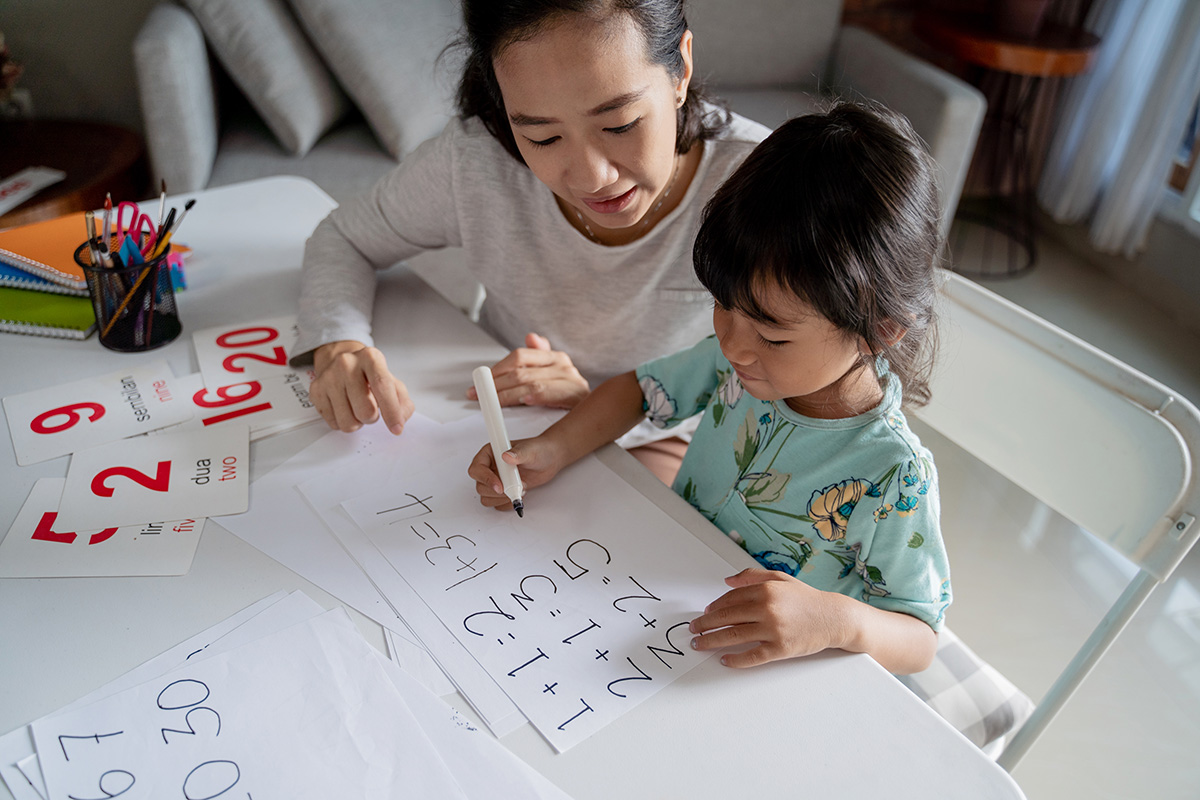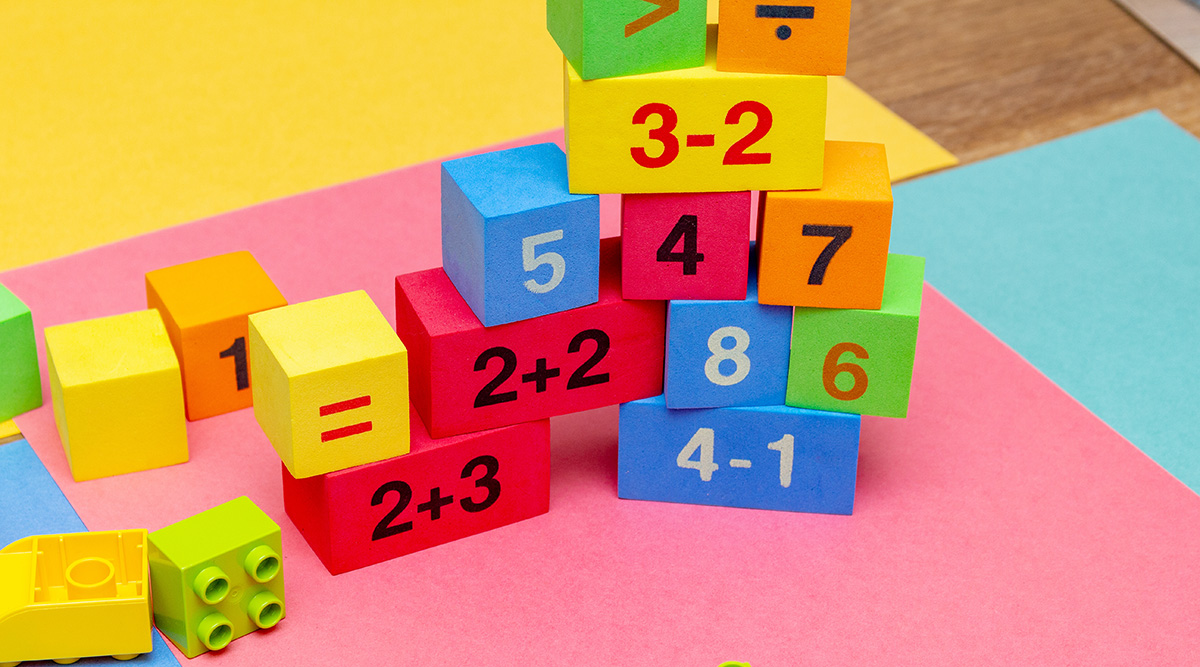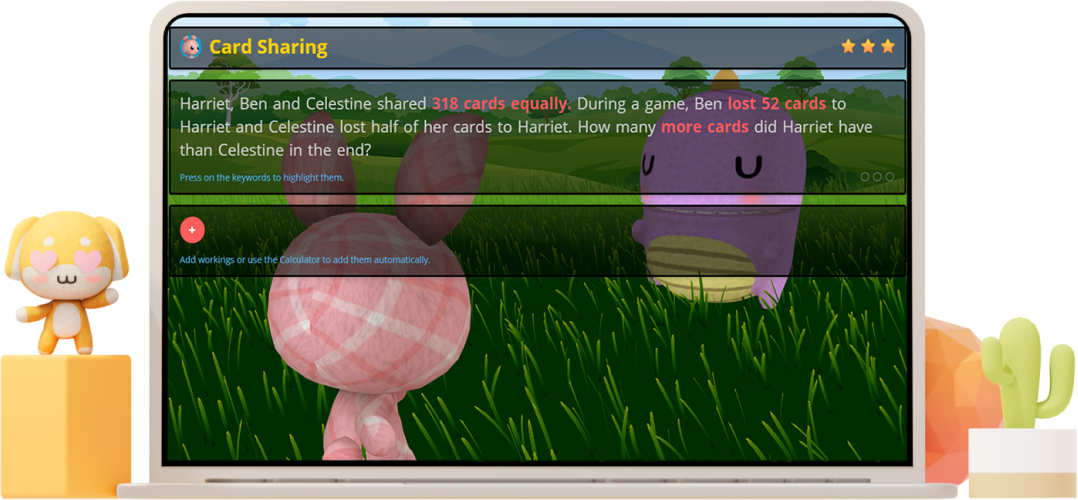Are you not sure on how to teach primary math 1 to your 7-year-old child? Are you lost on which maths teaching methods you should use for children? It’s normal for parents to worry about teaching their child, especially if they’ve never had experience doing so before. If you also have these concerns in your mind, you’ve come to the right place! In this article, we’re going to discuss Primary 1 Math topics and share 3 practical tips you can do as a parent to teach your child! After reading this, you’ll be better prepared to support your child and start teaching mathematics in no time!

How to prepare your child for Primary 1 Math
Before we discuss the specifics on to how you can teach math for your child, you should know the mathematical concepts involved in Primary 1! Here are the list of topics involved in the first level of Singapore’s primary school math curriculum.
- Number bonds
- Numbers to 100
- Addition
- Subtraction
- Multiplication
- Division
- Shapes
- Length etc.
If you require a more comprehensive list of Primary 1 topics and skills, feel free to check out our Primary 1 Maths syllabus page!

Top 3 tips for teaching Primary 1 math
Teaching your child at home can be a challenge at times. While you are focused on teaching them, your child may start chatting with you about everything else except the lesson. It can also be hard to have your mini students understand the concepts you’re trying to teach. In order to facilitate an effective and smooth learning process, here are 3 simple tips that help make your child focus more on the lesson!
1. Use visuals
Most children are visual learners, meaning that they understand better when it’s something they can see. So, avoid using too many words and start using pictures and bar graphs while teaching your child. This picture-based learning method is incredibly effective when you’re trying to show how math instructions and math problems work in real life! This way, your child uses less time to understand math concepts and can solve problems on their own. There’s a reason why the MOE implements the Singapore bar model in the primary school math curriculum, you know. If you require a more concrete example, here’s a video tutorial example of how we teach multiplication at Practicle to help children learn math visually:
2. Keep language simple
Besides engaging them with visuals, how you communicate with your child also plays a great role in your mini student’s learning. You can’t expect children to understand any math if you use “big adult words” to teach them. You also can’t expect them to have the same math skills and experience you have as an adult. The best way to teach young kids is by keeping things simple. Use words that they already know and real life examples they can relate to. This way, it’ll be easier for your students to develop an understanding of math. You can also use learning methods that your mini students work best with! For example, Practicle uses interactive math games to get children invested in learning math.
3. Keep it short
Finally, before you start teaching your child, try to first adjust your expectations. Can you expect them to be able to sit still for 1 hour straight? Will they absorb the material as quickly as you did? Probably not. If you want an effective study lesson with your young ones, you should cater to their short attention spans. Instead of going for an hour long study session, try shortening it to 15 minutes. Focus on a specific topic instead of everything at once. By keeping your lessons short, your child will be more motivated to focus for the session. This learning method is perfect to raise your child’s confidence levels in learning math! This also makes it easier for you to teach slow learners math, since they’ll only need to learn one concept at a time.
Teach your child math with Practicle!
Teaching your child any subject can be hard. But now that you’ve read these helpful suggestions, you’ll know more about how to teach your child arithmetic maths in the most effective way possible! If you need more resources to help you teach math, you can try out Practicle’s math learning game! Designed by ex-school teachers and aligned with the MOE’s Singapore Math curriculum, we help young students learn math through fun math games. Our AI-based daily quests and prizes have made lots of parents and children come back for more! You can try out our 7-day free trial to see for yourself!

